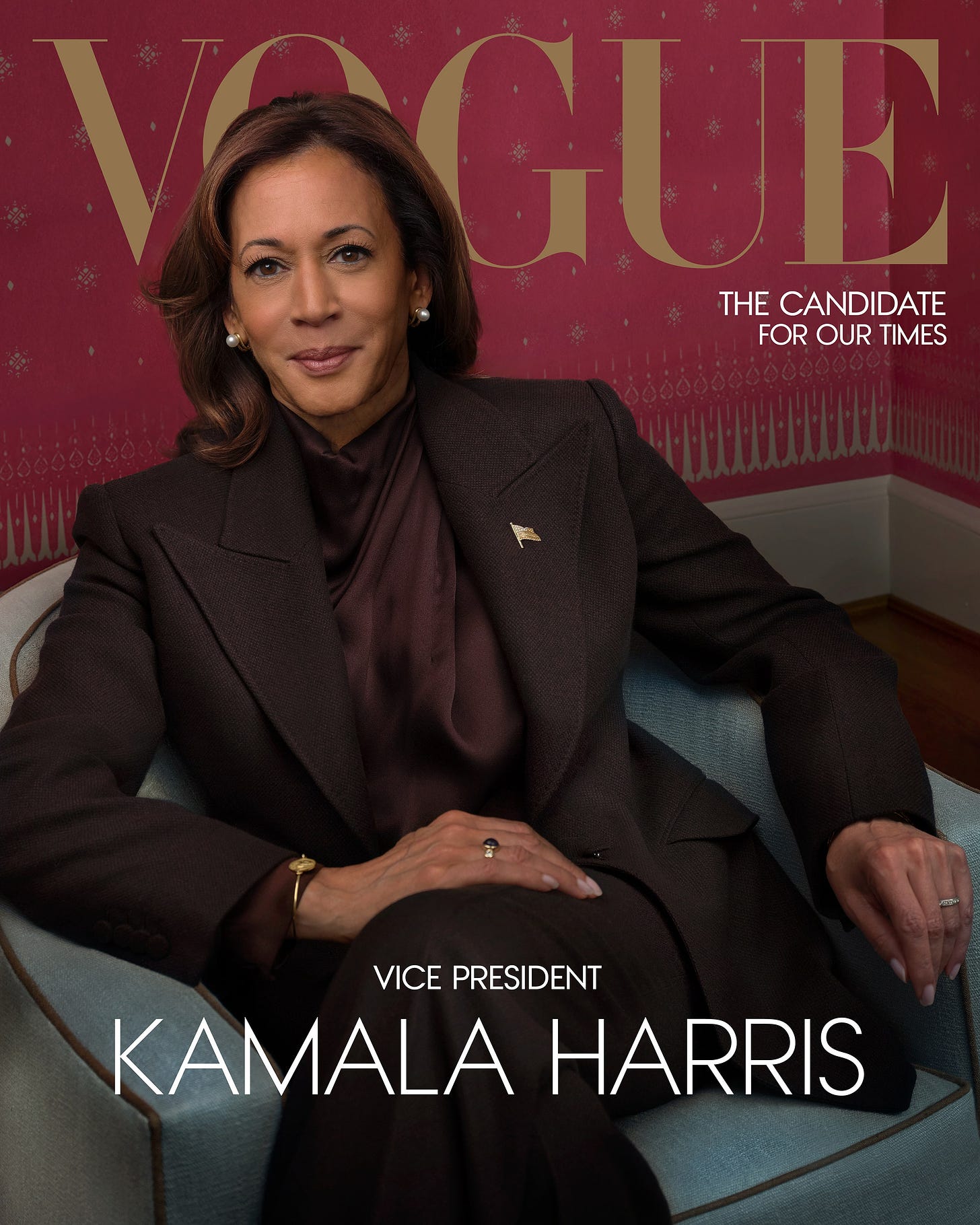Earlier in Back Row:
Kamala Harris’s second Vogue cover dropped last week without much controversy. On the face of it, this might seem like a good thing for Vogue and at worst a net-neutral event for Harris. But the swiftness with which the Vogue story got swept aside in the Vice President’s home-stretch media blitz is worrying for Vogue.
We mostly consume media in our own algorithmically tailored echo chambers, and mine is as primed as anyone’s to see news about Anna Wintour and Vogue. And yet I saw and heard more about Harris going on the Call Her Daddy podcast, which I don’t listen to regularly, where host Alex Cooper interviewed her about issues of particular interest to women. That episode really reinforced how Call Her Daddy has supplanted legacy magazines like Glamour and Cosmopolitan, which used to get better access to candidates. It has also supplanted legacy magazines that still get access, like Vogue, which has — unlike Cooper — endorsed Harris.
The Vogue cover did wash through my feeds. A lot of fashion-oriented accounts posted it. But then it disappeared after a half day or so of scrolling. I initially spent more time watching The Shade Room’s interview with Harris than I did engaging with the Vogue cover story (I later took the time to read the article in part because I decided to write about it here).
You can see a modern media strategy at work from the Harris campaign, which is trying to reach as many persuadable voters as possible through the outlets that people truly spend time with and feel connected to.
Keep reading with a 7-day free trial
Subscribe to Back Row to keep reading this post and get 7 days of free access to the full post archives.






